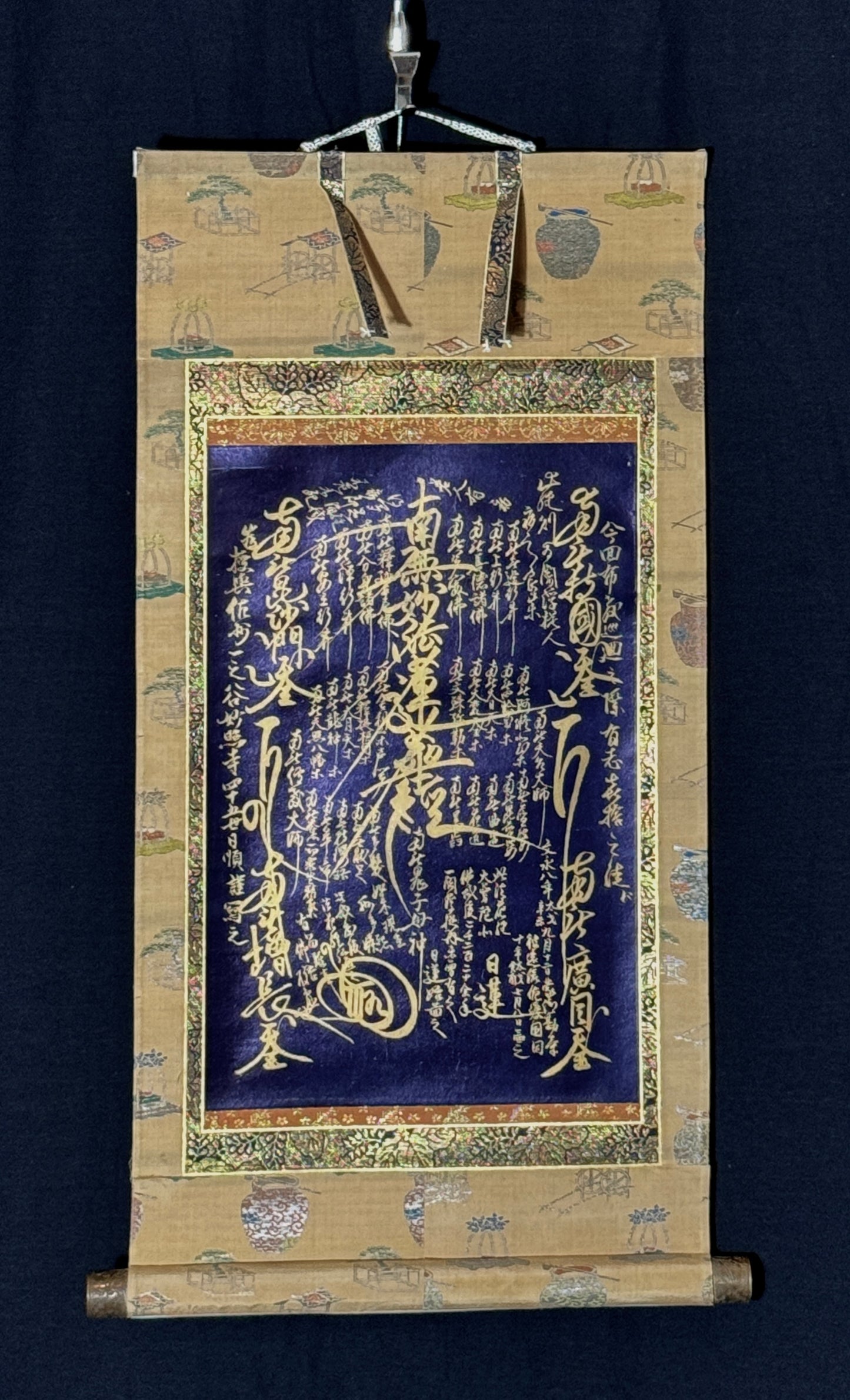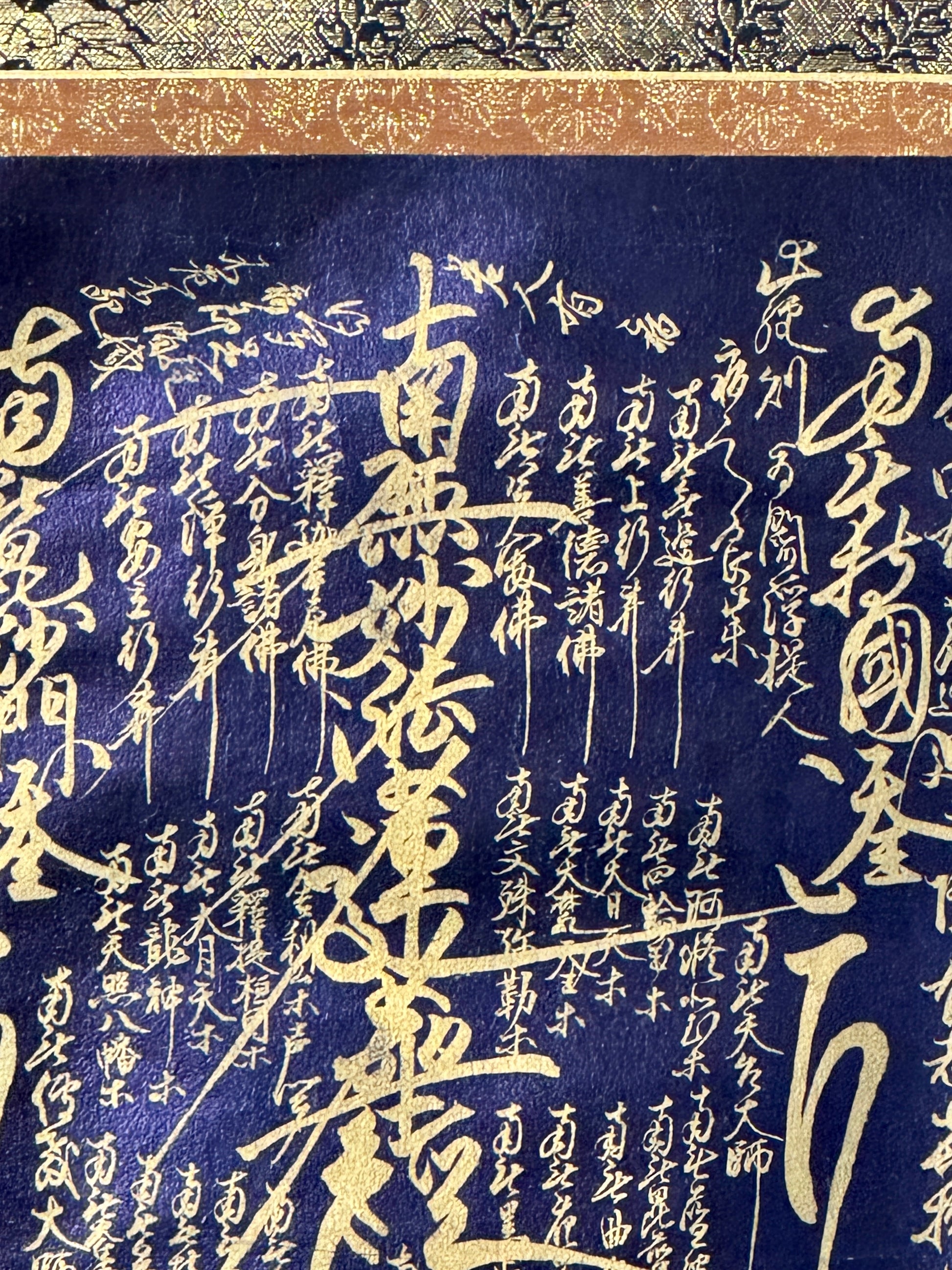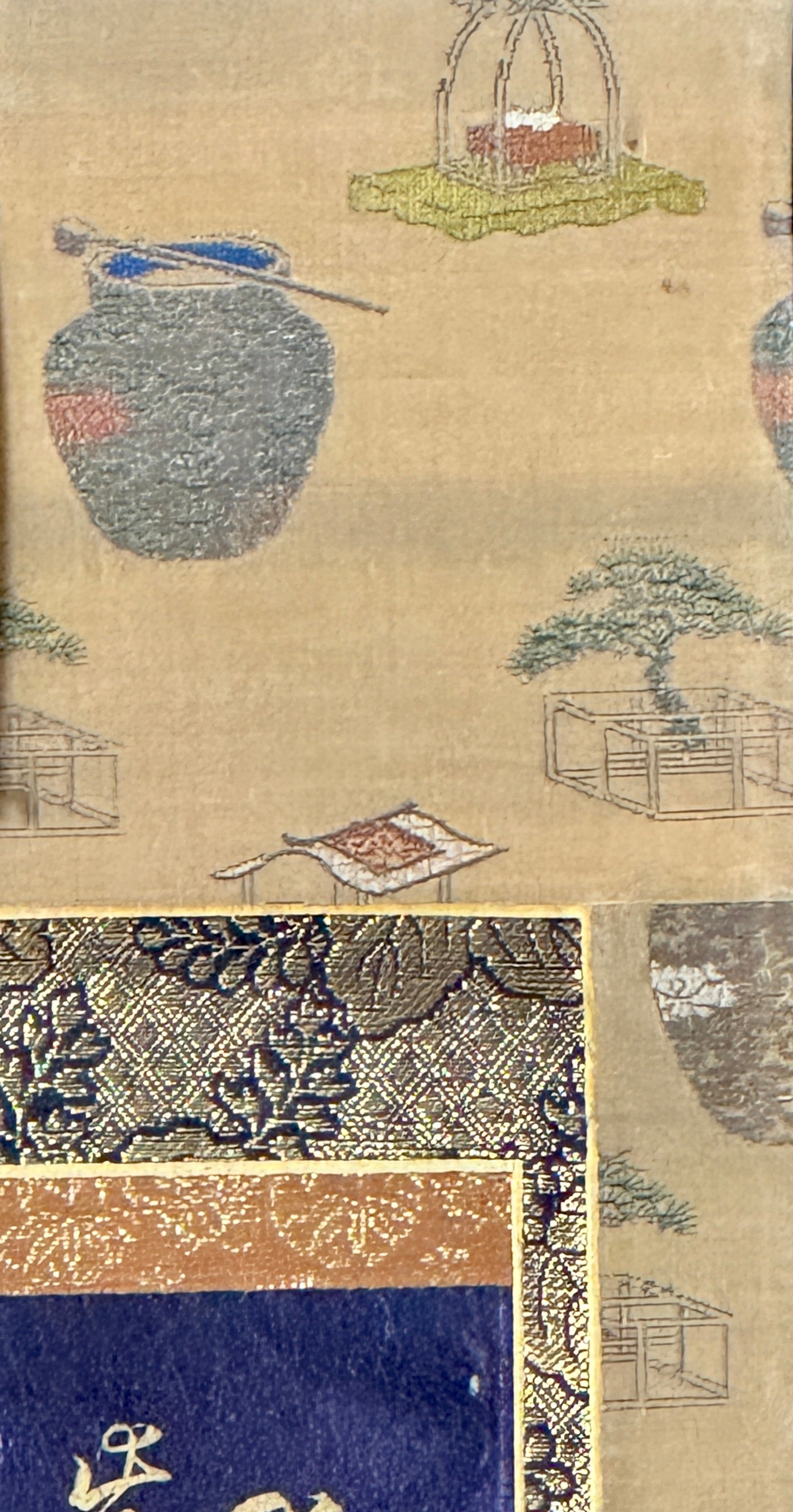Guignard Kyoto Collection
Calligraphy Mandala | Nichiren 日蓮 (1222-1282) | Mid 19th century
Calligraphy Mandala | Nichiren 日蓮 (1222-1282) | Mid 19th century
Couldn't load pickup availability
The founder of the sect Nichiren from the 13th century has had a large following up to the most recent times (Sōka Gakkai). He is probably so famous because the element of trance has been central to his religious practice for centuries. For a believer, it is enough to praise the wisdom of the Lotus Sutra for fifteen minutes with the opening words: "Namuyōhō rengekyō" and to purify oneself spiritually through the rhythm of this prayer phrase.
Believers in other Buddhist sects look intensively at figurative and geometric mandalas, which allow them to experience a heavenly world. Since, despite extensive textual studies, the Nichiren sect does not seek to fill ordinary believers with religious images or detailed texts, the more or less canonized mandala of the Nichiren sect is a calligraphy with dozens of repetitions of a few lines of text from the Lotus Sutra - just as the believer recites them.
The small, precious mandala can only be dated based on the dark blue paper that bears the lines calligraphed in gold. This intense dark blue was achieved by dyeing it dozens of times with indigo. The dyeing process must have been extremely laborious - in terms of time and money. This is probably why it has not been practiced since the second half of the 19th century.
Also valuable is the mounting with a finely woven silk fabric, which probably dates from the first half of the 19th century. These two aspects allow an approximate dating of the scroll painting.
The calligraphy can be read (at least in part), but it must be aesthetically understood in its overall rhythm. You must be able to enjoy the elegance of the groupings of lines and understand the long threads of the characters' strokes as a musicalization of the lettering. Because it is always about sounds, about vibrations that can take you to a higher state of consciousness.






